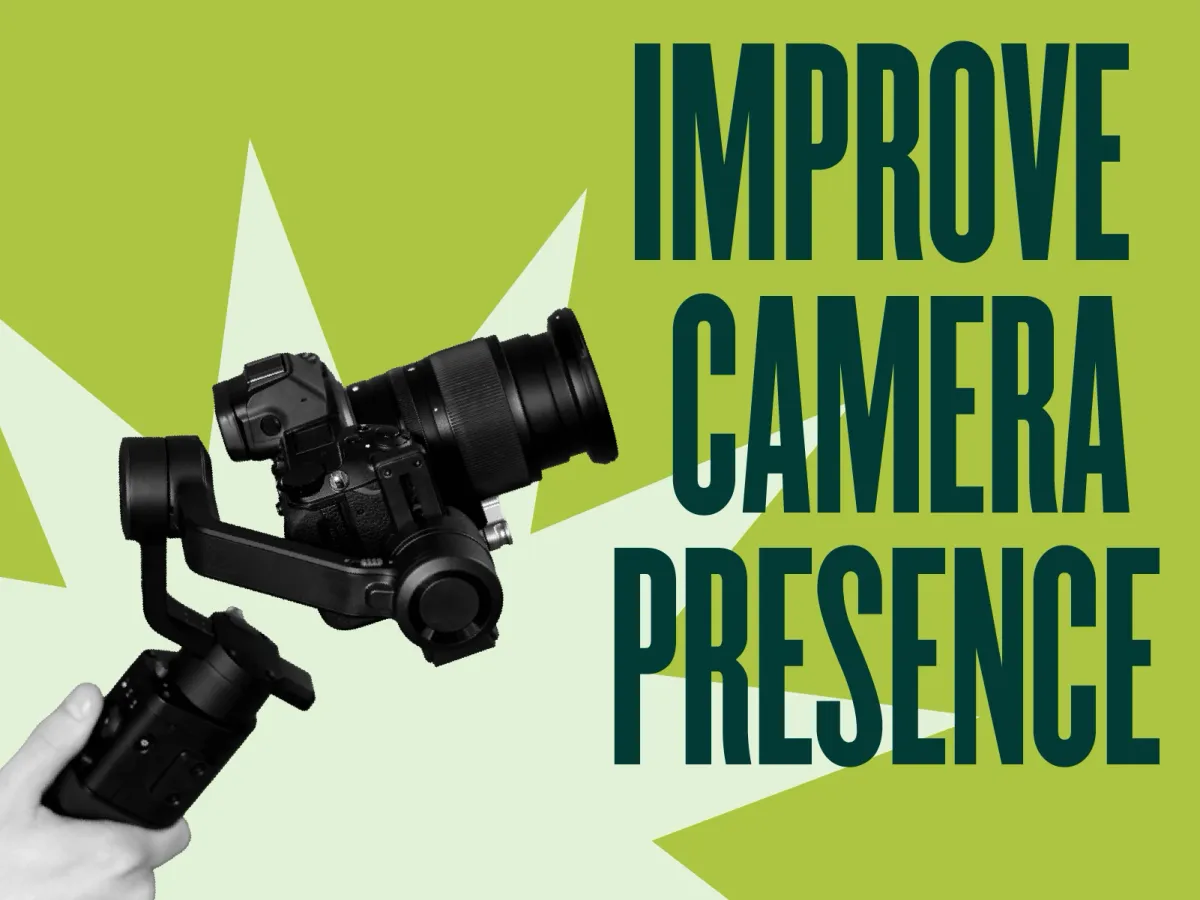As a content creator, you may find yourself in front of the camera more often than you'd like. Whether you're filming a vlog, recording a tutorial, or shooting a commercial, it's essential to have a good camera presence. Camera presence is how you come across on camera, including your body language, facial expressions, and overall energy. Your on-camera presence is also crucial for presentations, interviews, or any video recording that needs to make an intended impact. You want to come across as confident and knowledgeable, and most importantly, you want viewers to be interested in what you have to say. This article offers six tips that will significantly improve your on-camera presence. To motivate you even more, these tips are as good for your interpersonal encounters as your on-camera presence.
1. Plan, But Not Too Much
It's essential to know what you want to say before filming, but if you over-plan things it will show on camera. You don't want to sound or look like you're reading off a script, so allow yourself room to be spontaneous and organic. If you get stuck, take a deep breath and relax, because the camera will pick up on any uneasiness and it will be reflected in the final product. If you make a mistake while recording a video, you can always edit it out.
While script writing gives you more clarity, it mainly works when you already have a good on-camera presence or are trained to read the script from a teleprompter. The point here is that you want to look and sound natural. Pro tip: You can create bullet points that cover the main topics you want to hit. This will help keep you on track without sounding rehearsed.
2. Improve Your Sound and Articulate Your Speech
Your voice is a significant part of on-camera presence, so it's crucial to have good diction and pronunciation. If you mumble your words or speak too fast, viewers will find it challenging to understand you. You can remedy this by recording yourself as you speak and then listening to identify any problem areas. Once you know what needs to be worked on, practice speaking slowly and deliberately. It may feel unnatural initially, but with time and practice, it will come to be natural.
Generally, you want to talk slowly and concisely until you become entirely comfortable and won't get nervous when speaking faster. Also, if you have an accent, that's fine! Embrace it and use it to your advantage. Viewers will find it refreshing and unique. Just make sure you're still easy to understand.
Still, sometimes you may be unhappy with how you sound on video, especially if you don't have good recording equipment, which makes you lucky to have come around this article. No, you don't have to buy an expensive microphone. To crisp, clear sound, regardless of the recording quality, environment, distance, etc., all you need is Podcastle.
The AI-powered software allows you to record and edit audio and bring it to studio-quality with a few easy-to-perform actions. After you have your audio in the app, remove all the frustrating background noise and amplify your voice by applying the Magic Dust feature with a few clicks. You can also let the AI adjust the levels of your audio track with the auto-leveling tool.
To take it a step forward, you can remove silent segments and detect filler words (such as the uhs and uhms) with just one click each.
For all the shy ones who see no way through this, Podcastle has you covered too. Not only can you have realistic sample voices speak a written text for you, you can now also clone your voice and let the AI do the talking with your voice.
3. Maintain Virtual Eye Contact With The Viewer
When you're on camera, it can be easy to get caught looking away, just like you may do it in person. Generally, keeping eye contact with your interlocutor leads to a much better connection. The same goes for video content. It's important to remember that there is a real person on the other side of the camera, and you want to maintain eye contact with them. This will help create a connection and make your conversation feel more natural.
There are several ways you can achieve this. First, imagine you're looking into the eyes of the person watching your video. This will help you focus and maintain eye contact. Alternatively, you can focus on the camera lens, which will create the effect of making eye contact with the viewer.
Make sure you don't get too close to the camera, as this can be off-putting for viewers. Maintaining a comfortable distance from the camera will help you strike the perfect balance between making eye contact and giving your viewers personal space.
4. Keep a Good Posture and Relax Your Muscles
Your posture and the way you carry yourself have a significant impact on on-camera presence. If you're slouching or fidgeting, it will be difficult for viewers to take you seriously. If you're standing or sitting straight and holding yourself confidently, you will come across as more credible and trustworthy.
A straight posture is when your ears are aligned with your shoulders (looking from the side). If you don't have good posture now, it's wise to correct it, as it will benefit you far beyond making video content.
To find the perfect posture:
1) Start by standing up straight and your feet shoulder-width apart.
2) Relax your shoulders and let your arms hang down at your sides.
3) Once you're in this position, take a deep breath and exhale slowly to help you relax your muscles.
You can adjust your posture to find the most comfortable and confident position. Keep your back vertical and straight when you're sitting as well. Constantly remind yourself to maintain good posture, which will become natural with time.
5. Be Intentional With Your Body Language
Your body language plays a significant role in camera presence. It can be easy to forget viewers can see your entire body, not just your face. This means you must be intentional with how you use your body to ensure you convey the right message effectively.
Pay attention to how you use your hands when you're on camera. Gestures can help emphasize your point and add interest to your video, but be sure not to overdo it. If you're using too many hand gestures, it can be distracting for viewers.
Your facial expressions are also important. Make sure you are conveying the right emotions with your face. For example, use a relaxed and open facial expression if you're trying to convey confidence. If you're expressing excitement, use animated expressions and make sure your face conveys it.
In addition, pay attention to how you move your body. Subtle movements can help add interest to your video, but big or jerky movements can be distracting. Again, try not to overdo it.
The way you use your body language should be intentional and in line with the message you're trying to convey until it becomes instinctive. By paying attention to these nonverbal cues, you can ensure your camera presence is on point.
6. Practice, Practice, Practice!
The best way to improve your on-camera presence is to practice as often as possible. The more you get in front of the camera, the more comfortable you will become. And as you become more relaxed, your on-camera presence will naturally improve.
If you don't have a lot of opportunities to be on camera, there are still plenty of ways to practice. You can set up a camera in your home and record yourself as if you were giving a presentation. Or you can practice in front of a mirror.
The key is getting comfortable with the camera and being on camera. The more you practice, the better you will become at it. And eventually, it will become second nature.
Closing Points
Practicing and improving on-camera presence is important for anyone who wants to be successful on camera. By following these tips, you can improve your camera presence and ensure you convey the right message when you're on camera.
As a bonus pro tip, if your video content includes remote interviews, you can do it with Podcastle. It allows you to easily hold video recording sessions with up to 10 participants, be it an interview, a podcast, or a webinar. You will receive your video file in a nicely rendered grid layout.
The software will also automatically make your voice sound professional, allowing you to avoid overthinking it during the session. You can still access all the interview files separately after the recording and edit the audio tracks individually.








